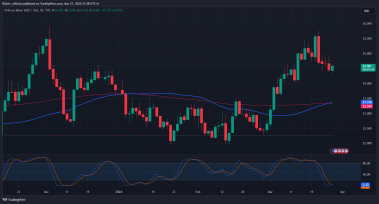Despite indications of a downturn in the economy, Canada added significantly more jobs in April than was anticipated. According to figures released on Friday, the unemployment rate remained close to a record low for a fifth straight month.
In April, the economy added a net 41,400 jobs, according to figures from Statistics Canada, while the unemployment rate remained at 5.0%.
According to Reuters’ survey of analysts, April would see a net addition of 20,000 jobs, and the unemployment rate would marginally increase to 5.1%.
According to Statscan, it was the eighth consecutive month of job growth, increasing the number of employed individuals by a net 423,900 since September. Since December, the jobless rate has barely budged from the all-time low of 4.9%.
The employment gains last month were entirely in part-time work, which added a net 47,600 jobs, and more than offset the 6,200 full-time jobs lost. It was the first notable increase in part-time work since October 2022, Statscan said.
According to Andrew Grantham, a senior economist at CIBC capital markets, “Even though today’s increase in employment was fairly narrowly based and driven by part-time work, the labour market is stronger and tighter than we would have expected given signs of deceleration in economic growth.”
According to a Statscan flash estimate provided last week, the Canadian economy probably shrank in March, resulting to a 1.5% annualised GDP growth in the first quarter.
As the effects of previous rate hikes start to sink in, the Bank of Canada (BoC) anticipates positive but sluggish economic growth in the remaining three quarters of this year. To slow the economy and lower inflation, it increased interest rates at its previous eight policy sessions before maintaining them at the last two meetings.
According to Nathan Janzen, senior economist at Royal Bank Of Canada (NYSE:RY), April’s robust employment figures are unlikely to impact this year’s GDP growth projections.
“We have a negative GDP growth starting in Q2 and into Q3 and I don’t think that will change as a result of this data,” Janzen stated.
The central bank pays great attention to this statistic, showing that the average hourly income for permanent employees increased by 5.2% from April 2022 to March. The BoC has stated that wage pressures in a competitive labour market and sticky service pricing may require interest rates to remain high for some time.
According to Governor Tiff Macklem on Thursday, the central bank’s baseline scenario anticipates a softening of the labour market as GDP slows, reducing wage pressures and a reduction in the actions of businesses in establishing prices.
“We still don’t anticipate the BoC raising rates again, although inflation is still strong. The unemployment rate is still quite low, according to Janzen.
A net 6,300 jobs were added to the services sector in April, largely in construction, wholesale and retail trade, transportation, and warehousing.
In relation to the American currency, the Canadian dollar grew by 0.6% to reach a two-week high of 1.3454, or 74.33 U.S. cents.




 By:
By:





